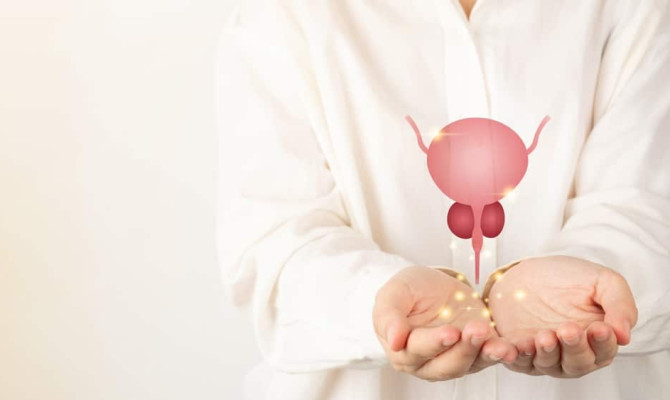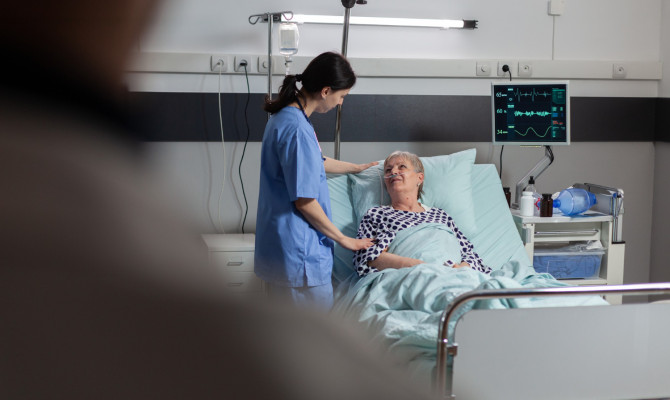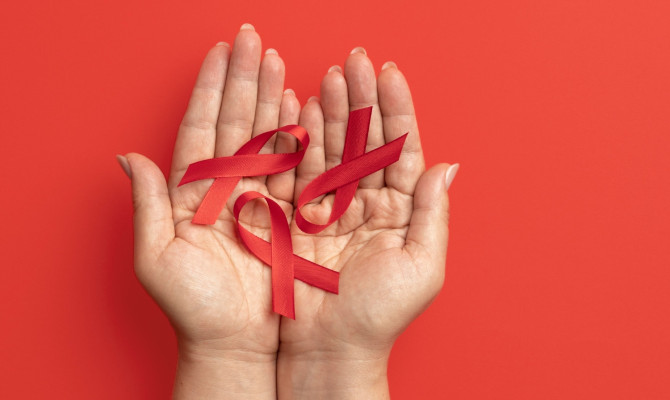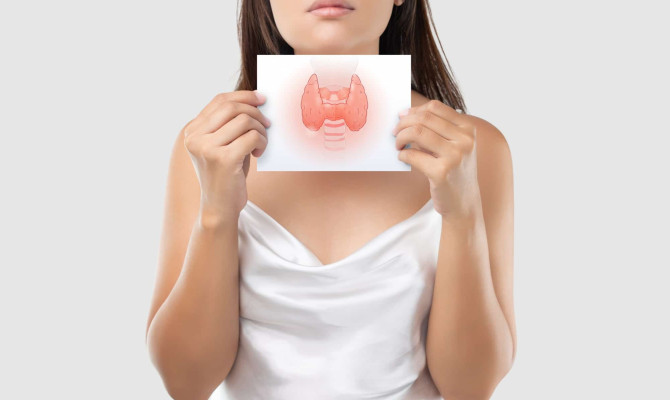Hernia : Understanding the causes, symptoms, and treatment

- Hernia
- 16 Aug 2023
Overview
What is Hernia?
A hernia is described as the protrusion of distinct internal structures by means of a weakened or torn muscle or tissue that normally keeps it in position. The majority of hernias occur within the abdominal region.1Overview| Researched based study from Cancer.gov
Around 10% of individuals experience the development of a hernia at some point in their lives. The occurrence of all types of hernias tends to rise as individuals get older.2Overview| Researched based study from Mayoclinic.org Hernias can also affect children and are not exclusive to adults. Children can develop hernias due to various factors or conditions. Typically, hernias are not considered dangerous and can often be repaired through a standard surgical procedure involving a small incision to reposition the protruding tissue back into place. However, in rare instances, complications can arise. A hernia may become strangulated when the blood supply to the protruded tissue is compromised, leading to tissue damage or death.3Overview| Researched based study from Nhs.uk

Types
Types of Hernia
Femoral hernia
- It is characterized by a bulge that appears in the upper thigh, situated immediately underneath the inguinal area. The condition is mostly seen in females compared to males.
Hiatal hernia
- In this type, a section of the upper abdominal region protrudes by means of the diaphragm muscle. This leads to the upward displacement of a part of the gastric region into the thoracic cavity.
Incisional hernia
- An incisional hernia can develop when there is a weakness or gap in the muscle tissue around a previous surgical incision in the abdomen.
Umbilical hernia
- It is characterized by a protrusion near the belly button. It occurs when the muscle or tissue around the umbilicus (belly button) does not fully close or heal properly after birth.
Inguinal hernia
- It is characterized by a bulge that appears in the inguinal region. It is more prevalent in men than in women. 3Types| Researched based study from Nhs.uk
Causes
What causes a Hernia?
The causes of certain hernias may not be definitively identified, but many are attributed to increased pressure within the abdomen or a weakened area in the abdominal wall, or a combination of both factors.
Week abdominal wall
- The weakened abdominal wall can be a congenital (present at birth) defect or can develop gradually due to factors such as injury or previous surgery.2Causes| Researched based study from Mayoclinic.org
Age
- Age is also a significant factor, as hernias are more commonly observed in individuals over the age of 50, likely due to the natural weakening of the abdominal tissues with age.
Genetic issues
- Genetic abnormalities can indeed contribute to hernias, particularly in newborns.
Body weight
- Hiatus hernias are more likely to occur in expectant mothers and individuals with excess weight as a result of the elevated force exerted on the abdominal wall.4Causes| Researched based study from Niddk.nih.gov
Abdominal stress
- Factors such as constipation (straining during bowel movements), heavy lifting, or persistent coughing or sneezing can also exert stress on the abdominal area and potentially contribute to hernia development.
Other causes
- Among males, inguinal hernias manifest in the inguinal area, particularly in a region known as the inguinal canal. When there is a weakness in abdominal tissues in this region, it can create an opportunity for a section of the intestine to protrude out of the abdomen.
- Inguinal hernias in women are relatively uncommon, but they can occur in a specific area where the uterine tissue emerges from the abdomen and connects with the surrounding tissue near the vaginal opening.This region is known as the inguinal canal in women. If there is a weakness in the abdominal tissues in this area, an inguinal hernia can form.
- Umbilical hernias can be present at birth, meaning they are congenital. In grown-ups, hernias can arise when there is a vulnerability in the tissue surrounding the umbilical region, coupled with escalated pressure exerted on the belly region.5Causes| Researched based study from Columbiasurgery.org
Symptoms
Hernia symptoms for males and females
Common symptoms
- A visible bulge or swelling in the groin or pelvic area, which is often accompanied by discomfort or pain.
- The characteristic indication for the majority of inguinal hernias is a mild, nagging discomfort or a dull ache, particularly when engaging in activities such as lifting objects, tending to the garden, or entering and exiting a vehicle.
- Individuals with femoral hernias commonly experience groin pain that is positioned lower and more toward the inner side of the leg. This pain often extends down the front of the leg, following a radiating pattern.6Symptoms| Researched based study from Hopkinsmedicine.org
Symptoms in men
- Bulge: A localized bulge or protrusion of tissues in a specific area of the body.
- Discomfort: It intensifies notably when standing or in an upright position and coughing or lifting.
- Pulling sensation: A distinct sensation of something being tugged or pulled in the affected region.
- Strain: The heightened strain in the affected area.
- Diminished strength: It is due to the inability to utilize the local muscles.
- Enlargement or puffiness.7Symptoms| Researched based study from Healthdirect.gov.au
Symptoms in women
- Pain: Discomfort or sharp pain and heightened pain during physical activity.
- Burning sensation: A sensation of localized heat or burning in the affected area.
- Protrusion: While not always present in women with groin hernias, there may be a noticeable pocket or protrusion at the site of the hernia.
Diagnosis
Diagnosis of Hernia
Hernias are typically identified based on their type and severity, and appropriate treatment is then administered.
Inguinal hernia
- It is diagnosed by conducting a physical examination, as the bulge is usually observable.
- Sometimes, an imaging evaluation might be recommended, such as a CT scan or ultrasound of the abdomen.
Hiatal hernia
- Examinations may encompass an esophagram or barium swallow, blood tests, endoscopy, or manometry (a catheter inserted through the nostril, down the esophagus, and into the stomach).
Umbilical hernia
- A physical examination and occasionally an imaging test.
Incisional hernia
- A physical examination to assess the presence of a bulge or protrusion at the site of a previous surgical incision.
Femoral hernia
- A physical examination and sometimes an abdominal ultrasound may be asked for.
- If needed, an imaging examination can also be utilized to visualize the weakened or torn muscle opening and the protruding tissue.8Diagnosis| Researched based study from Medlineplus.gov
Risk
Who are at risk?
Heavy lifting
- Individuals who regularly engage in activities that involve frequent or repetitive heavy lifting, such as manual laborers or weightlifters, put additional strain on their abdominal muscles.
- This persistent strain can weaken the muscles and increase the likelihood of a hernia.
Obesity
- In the abdomen, if the weight increases, it puts added pressure on the abdominal walls.
- This increased pressure can weaken the muscles and create openings through which hernias can develop.
Pregnancy
- The expanding womb throughout gestation can apply force on the stomach muscles.
- This, combined with hormonal changes that relax the muscles and ligaments, can make pregnant individuals more susceptible to hernias, particularly in the groin or umbilical area.
Chronic cough
- A persistent cough, often associated with conditions like chronic bronchitis or asthma, places recurring stress on the abdominal muscles.
- With the passage of time, this can result in muscle debilitation and contribute to the emergence of hernias.
Constipation
- Chronic constipation, characterized by difficulty in passing stool or infrequent bowel movements, can require straining during bowel movements.
- The repetitive stress places excessive pressure on the abdominal muscles, escalating the vulnerability to hernias.
Sneezing or diarrhea
- Frequent and forceful sneezing, as well as episodes of diarrhea, can lead to sudden and intense pressure changes in the abdomen.
- These abrupt pressure fluctuations can strain the abdominal muscles and contribute to hernia formation.
Smoking
- Smoking has been associated with a higher risk of developing hernias.
- It is believed that smoking weakens the connective tissues and impairs the body’s ability to heal and repair muscle and tissue damage, making individuals more vulnerable to hernias.4Risk| Researched based study from Niddk.nih.gov
Complications
Complications associated with Hernia
Discomfort
- If a hernia is not treated, it is probable for it to increase in size and cause discomfort.
Inflammation
- Untreated hernias can apply excessive pressure on neighboring tissues, resulting in inflammation and pain in the surrounding regions.
Difficult bowel movements
- In certain cases, a portion of the intestine may become ensnared in the abdominal wall, leading to a blockage of bowel movements. This can result in intense pain, feelings of queasiness, and difficulty with bowel movements.
Strangulation
- In severe instances, there is a hindrance to adequate blood flow caused by entrapment of the intestines, leading to strangulation.
- This can result in infection or necrosis of the intestinal tissue and may pose life-threatening circumstances. Therefore, a strangulated hernia necessitates urgent medical intervention.
Treatment
Hernia treatment
Medication
If an individual experiences heartburn and acid reflux due to a hiatal hernia, healthcare providers may suggest the following alternatives for medication:
- Antacids: These can assist in balancing the acidity levels in the stomach.
- H2 receptor blockers: These lower the production of acids.
- Proton pump inhibitors: These are more potent acid suppressants than H2-receptor antagonists.
Surgery
There are two primary options:
Open surgery
- In this type, a surgical incision is made in the groin region to visualize and repair the hernia.
- Once the hernia is repaired, the surgeon may close the abdominal wall using either sutures alone or sutures in combination with a mesh.
- The mesh is intended to fortify the vulnerable region of the abdominal wall where the hernia was present, promoting enhanced strength and support.5Treatment| Researched based study from Columbiasurgery.org
Laparoscopic surgery
- The surgical procedure involves making multiple minor incisions in the lower abdomen and inserting specialized instruments to visualize and repair the hernia.
- Typically, a surgical mesh is employed by the surgeon to secure and fortify the abdominal barrier.
- During the operative intervention, specific surgeons may opt for robotic-assisted hernia repair, wherein they control a console to direct robotic arms in executing the surgical technique.5Treatment| Researched based study from Columbiasurgery.org
Observational approach
- The “observational approach” is considered a potential substitute for surgical intervention in instances where a hernia is resulting in mild or inconspicuous manifestations.
- Individuals who choose to postpone surgery, particularly males with an inguinal hernia, should remain vigilant for symptoms and maintain regular visits to a medical professional.
- Approximately 70% of males with an inguinal hernia who opt for a delayed surgical approach will experience the onset of fresh or aggravated symptoms, necessitating surgical intervention within a span of five years.
- One potential consequence of excessive delay is that a larger hernia becomes increasingly challenging to rectify.
Diet

Dietary suggestions in Hernia
Avoid highly fatty foods
- Saturated or trans-fats-containing items like crimson meat, processed edibles, and high-fat dairy products ought to be strictly evaded due to their potential to induce inflammation and contribute to weight gain, thereby escalating the likelihood of exacerbating hernia issues.
- Examples of healthier alternatives include various types of nuts, seeds, olive oil, sunflower oil, guacamole, and grilled tuna.
Exclude low-fiber selections
- There are certain alternatives within the fibrous food group that are advisable to be excluded, such as refined flour products, commercially processed pasta, etc.
- In contrast, healthier alternatives consist of whole grain products, unprocessed grains, brown rice, and whole wheat pasta.
- Opting for these nutritious choices ensures a sufficient fiber intake while promoting weight management and reducing strain on the digestive system.
No to excessively sweetened food items
- Managing the number of calories consumed is crucial in relation to foods and beverages with high sugar content since they often lack significant nutritional value and can contribute to weight gain.
- Individuals with hernias should steer clear of food selections such as carbonated beverages, sugary treats, indulgent desserts, baked goods, and sweet biscuits.
- It is advisable to opt for healthier alternatives in their diet, although occasional indulgences may be allowed.
Add fruits
- Fruits serve as a nourishing substitute for sugary food items, offering a wide array of essential nutrients.
Reduce acidic food intake
- Acidic foods, while generally harmless and often nutritious, can, on numerous occasions, intensify the irritation and have an impact on individuals with hernias.
- If one is experiencing such effects, it is strongly advised to avoid consumables like citrus juices and beverages containing caffeine.
- Alternatively, individuals can choose replacement options for these items such as bell peppers and pepper-based products, papaya, berries, tart apples, and dishes seasoned with lemon juice instead of vinegar, like fermented vegetables.
- It is important to adhere strictly to these dietary modifications to mitigate potential irritation and discomfort caused by acidic foods in hernia patients.
Remedy
Remedies for Hernia
- If you are experiencing a hiatal hernia, it is advisable to consume small and easily digestible meals.
- Refrain from reclining or bending over immediately after eating and strive to maintain a healthy weight.
- A castor seed oil pack can be prepared and applied to the abdominal area to obtain some relief from hernia pain.
- Vegetable juice with a small amount of salt has the potential to offer significant relief in cases of hernia.
- The application of a cold compress or ice pack to the area affected by the hernia can help alleviate inflammation.
- Aloe Vera juice can be consumed on a fasting stomach in the early hours after getting up from bed.
- Aloe Vera is also beneficial for managing hernia when ingested between meals and can be topically applied to the affected area.
Prevention
Prevention of Hernia
- Engage in workouts with light weights, do yoga, go for walks, or participate in low-impact aerobic exercises such as swimming.
- Avoid improper heavy lifting.
- Prevent constipation during bowel movements by ensuring adequate hydration and maintaining a diet rich in fiber.
- Minimize intense coughing.
- Maintain a healthy weight.9Prevention| Researched based study from Nih.gov
Precautions
Precautions
The prognosis for the majority of hernias is generally favorable with appropriate treatment. A hernia does not recur but incisional hernias have a higher likelihood of reoccurrence.4Precautions| Researched based study from Niddk.nih.gov
When to worry about hernia pain?
If one experiences the following symptoms, it is crucial to seek immediate medical attention from a doctor or visit a hospital:9Precautions| Researched based study from Nih.gov
- Abrupt onset of severe pain along with
- Nausea and retching
- Elevated body temperature
- Change in color of the hernia protrusion, particularly if it appears red, purple, or exhibits any darkening
- Bowel irregularity and/or inability to release gas.
Any feedback on this article?
 This Articles content was accurate
This Articles content was accurate Very Informative Article
Very Informative Article I have a question or a comment
I have a question or a comment
 This article contains inaccurate content
This article contains inaccurate content This article was not helpful
This article was not helpful I have a question or a comment
I have a question or a comment
We appreciate your helpful feedback!
Checkout our social pages
References
-
National Cancer Institute
Hernia | Overview
-
Mayo Clinic
Inguinal hernia | Overview | Causes
-
National Health Service
Hernia | Overview | Types
-
National Institute of Diabetes and Digestive and Kidney Diseases
Inguinal Hernia | Causes | Risk | Precautions
-
Columbia Surgery
Hernia Types, Causes, and Treatments | Causes | Treatment
-
Johns Hopkins Medicine
How to Tell If You Have a Hernia | Symptoms
-
Health Direct
Hernias | Symptoms
-
Medline Plus
Hernia | Treatment
-
National Institutes of Health
Battling a Bulging Hernia-Don’t Ignore Your Groin Pain | Prevention | Precaution





































